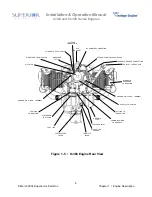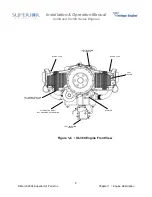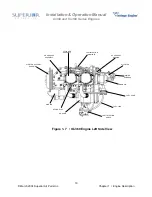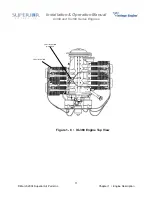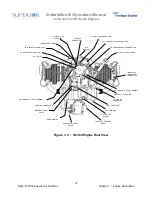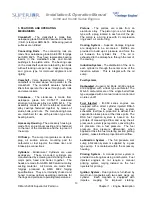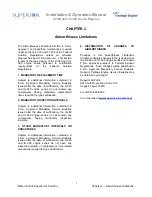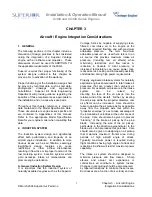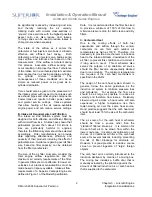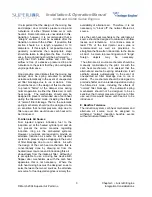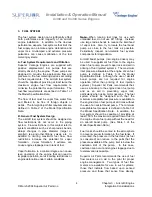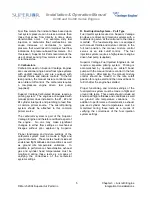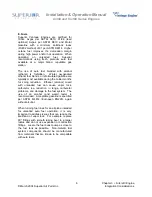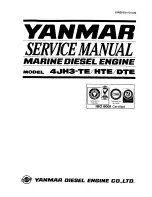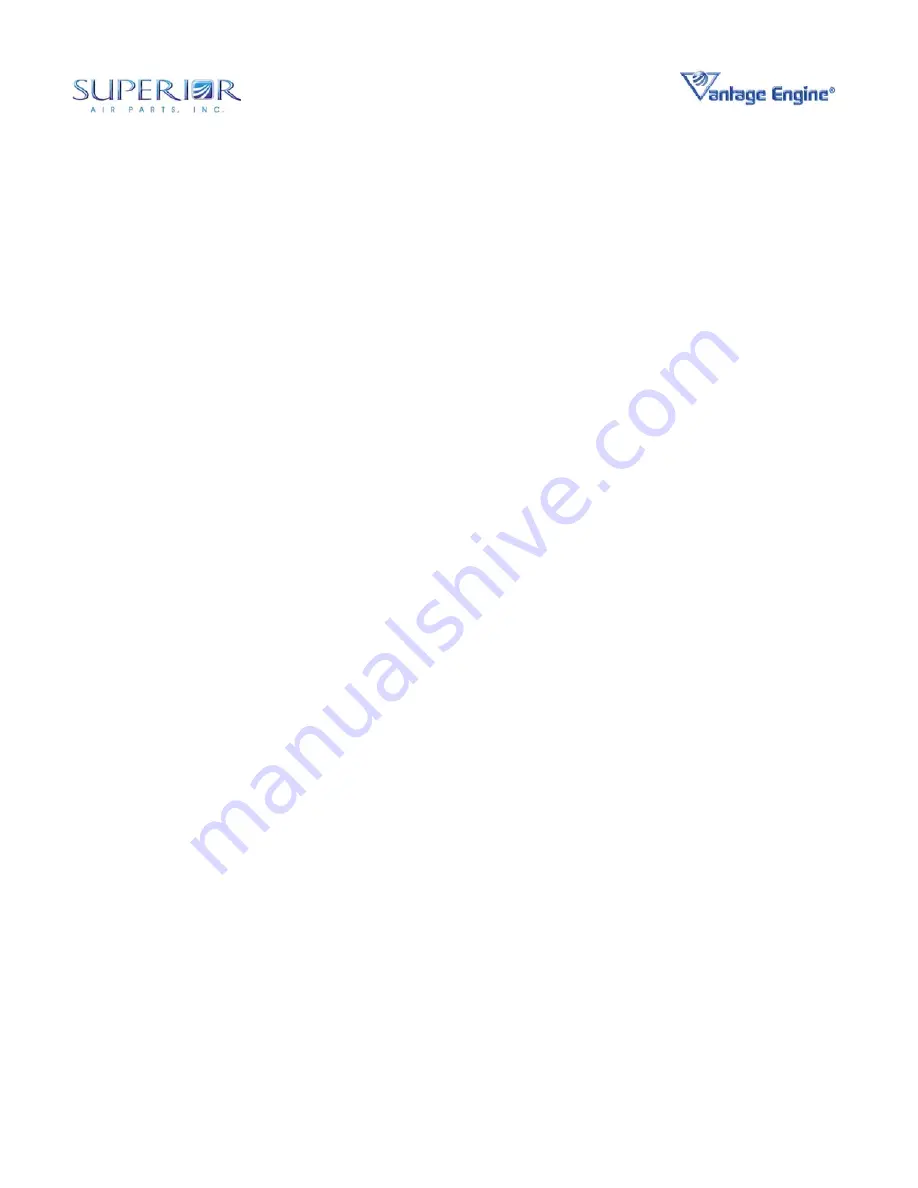
Installation & Operation Manual
O-360 and IO-360 Series Engines
3 Chapter 3 • Aircraft / Engine
© March 2004 Superior Air Parts Inc. Integration Considerations
It is important that the design of the mixing box
and damper door minimize pressure drop and
turbulence of either filtered intake air or carb
heat air. Some turbulence is unavoidable in this
transition; however it is recommended that a
“straight” section of duct be available after the
transition to smooth the airflow. If possible, this
section should be a length equivalent to 10
diameters. If this length is not possible due to
geometry constraints then appropriate steps
should be taken to straighten the flow. In either
case, thorough testing should be performed to
verify that both intake airflow and carb heat
airflow is free of excessive pressure drop and
turbulence to the extent that they do not degrade
engine performance.
Good practice also dictates that the mixing box
damper door be spring actuated to partially
actuate automatically in the event of unexpected
air filter blockage due to ice or debris. Care
should be taken in the design of this mechanism
to prevent “flutter” of the damper door during
normal operation in either the filtered air or carb
heat mode. The mechanism should also be
designed to prevent unintended use of carb heat
during the filtered air mode, including the effects
of “normal” filter blockage. That is, the automatic
spring mechanism should not be designed to be
so sensitive that normal pressure drop due to
filter use over time would cause carb heat air to
be introduced.
D. Alternate Air Source
Fuel injected engines introduce fuel to the
induction air at the heated cylinder port and do
not present the same concerns regarding
induction icing as the carbureted systems.
However, provisions are required to provide an
alternate induction air source for fuel injected
systems to prevent engine stoppage in the event
of filter blockage due to ice or debris. As with
the design of the carb heat mechanism, this is
conventionally done by drawing air from the
heated lower cowl area and introducing this air
downstream from the intake air filter. Although it
is acceptable to use a mixing box device with
flapper door mechanism as with the carb heat
apparatus, this is not necessary. Where the
carb heat mixing box must be designed so as to
select between the two air sources, the alternate
air source for fuel injected engines is simply the
availability of alternate air. Therefore, it is not
necessary to “block off” the normal filtered air
source.
Like the carb heat mechanism, the alternate air
source should be designed to minimize both flow
losses and turbulence. An entrance area at
least 75% of the fuel injector servo area is
recommended as well as provisions to
straighten the flow after introduction to the intake
air duct. A screen to prevent ingestion of “large”
foreign objects may be necessary.
The alternate air source mechanism should be
manually controllable by the pilot. As with the
carb heat mechanism, it is advised that the
alternate air source be spring actuated so it will
partially actuate automatically in the event of
unexpected air filter blockage due to ice or
debris. The mechanism should be designed to
preclude flutter and unintended operation during
the filtered air mode, including the effects of
“normal” filter blockage. The automatic spring
mechanism should not be designed to be so
sensitive that normal pressure drop due to filter
use over time would cause carb heat air to be
introduced.
E. Backfire Tolerance
The induction system, carb heat mechanism and
alternate air source must be designed to
withstand “normal” induction backfire events
without structural failure or fire.






